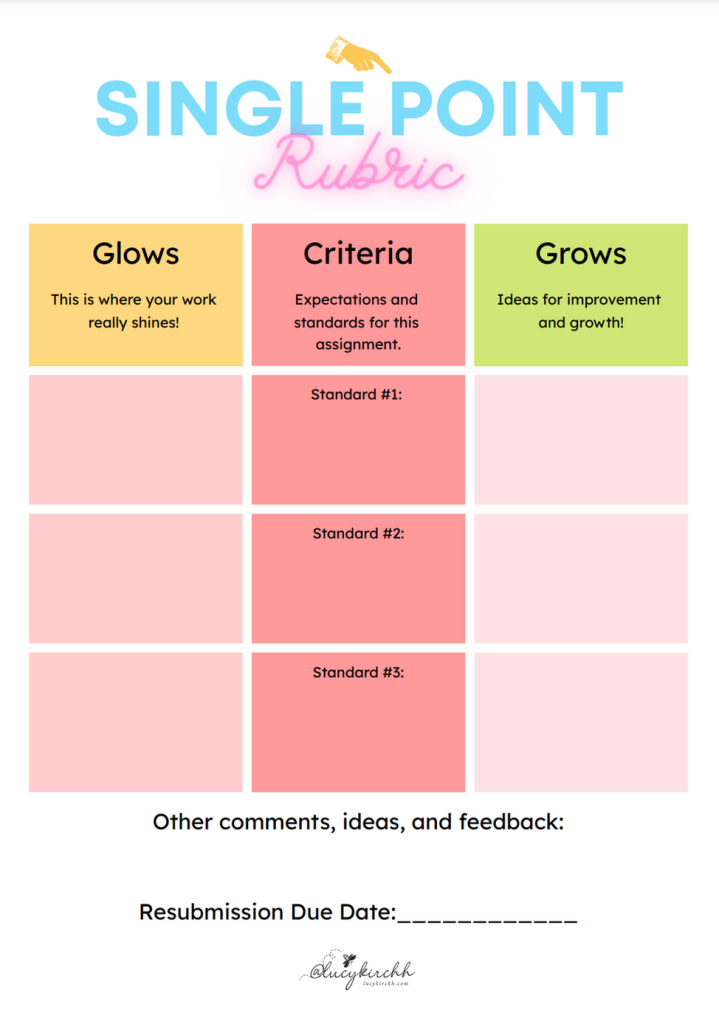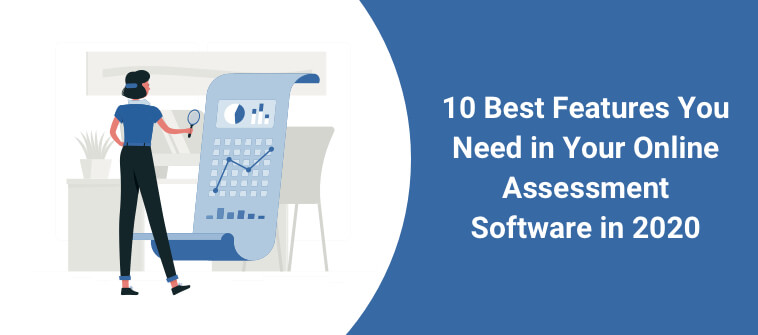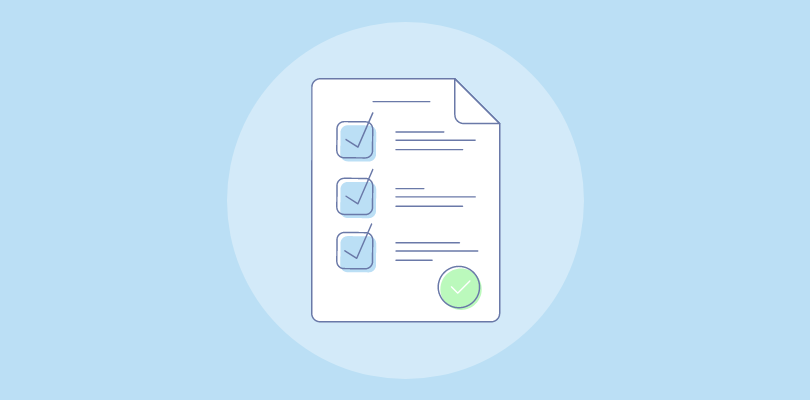In education, assessments are often seen as the thread connecting teaching, learning, and progress. But what if we could weave a richer tapestry of understanding?
Comprehensive assessments move beyond traditional single-point evaluations to provide a multifaceted view of student learning. This approach offers a range of benefits, impacting not only students but also educators and the educational system itself.
This blog post explores the definition and meaning of comprehensive assessments, examining their roles, benefits, and key elements for successful implementation.
Let’s dive right in.
What Is a Comprehensive Assessment?
A comprehensive assessment is a diverse approach to evaluating a student’s understanding, skills, and knowledge. It goes beyond traditional testing methods, encompassing various evaluation forms, such as online quizzes, standardized tests, performance-based assessments, portfolios, teacher observations, and self/peer reviews.
This broad spectrum of student assessment tools allows for a more in-depth understanding of a student’s abilities, learning styles, and areas for improvement. A comprehensive assessment can also be used in professional settings to evaluate employees for specific job roles and tasks and assess skill competencies.
Watch: How Luc Viatour Transformed Education for 1500+ Learners
What Are the Components of a Comprehensive Assessment?
Comprehensive assessment goes beyond tests or grades—it’s like piecing together a puzzle that shows the whole picture of how students learn. From planning to feedback, every step helps create a clearer view of each student’s progress. Here’s how it all comes together:
- Pre-Assessment Planning
Good assessments start with a plan. Before jumping into a new topic, teachers need to think about what they want students to learn and how to measure that learning. It’s all about being intentional.
For example, if you’re teaching critical thinking, you wouldn’t just hand out a multiple-choice test. Instead, you might have students analyze case studies, solve problems, or even debate real-world issues. This way, your assessment matches what you’re trying to teach.
- Data Collection Methods
To really understand how students are doing, you need a mix of tools. One-size-fits-all doesn’t work here.
- Performance Tasks: Think group presentations or debates where students apply what they’ve learned.
- Portfolios: These are like a scrapbook of student growth—perfect for subjects like art or writing.
- Observations: Keep an eye on how students engage in class activities.
- Interviews: A one-on-one chat can reveal how a student thinks through problems.
- Standardized Tests: These can help spot trends across a larger group.
Technology can make this whole process smoother. Tools like online AI quiz maker and learning management systems (LMS) track progress and help adjust to a student’s skill level, giving you deeper insights without extra work.
Watch: How to Create a Quiz With AI
- Rubrics & Grading Criteria

Image source: lucykirchh.com
Clear expectations make all the difference. Rubrics spell out exactly what’s expected so that students know how to succeed and teachers can grade fairly.
For example, a science project rubric might break things down into categories like experiment design, data analysis, and presentation. It’s not just about grading—it’s about showing students what’s important.
And let’s talk about fairness. Assessments should work for everyone, no matter their background. A history test, for instance, should include examples from diverse cultures to make it relatable to all students.
- Continuous Feedback Mechanisms
Feedback is where the magic happens. It’s not just about handing back a graded paper; it’s about helping students grow.
- Peer Reviews: Let students learn from each other—it’s collaborative and insightful.
- One-on-One Chats: These are perfect for diving deeper into what’s working and what’s not.
- Instant Feedback: AI tools or quick quizzes can give students real-time suggestions.
Imagine this: after a group activity, a teacher gives immediate feedback to help students tweak their approach before the next task. It’s small moments like these that keep students motivated and learning on the go.
Types of Comprehensive Assessments in Education
Comprehensive assessment encompasses a variety of approaches, each designed to provide unique insights into student learning:
1. Formative Assessments
Formative assessments are ongoing assessments woven into the fabric of daily instruction. They provide real-time feedback to students and inform immediate adjustments to teaching strategies.
Examples include exit tickets, quick quizzes, think-pair-share activities, student self-reflections, and informal observations of classroom discussions.
Formative assessments are flexible and adaptable, allowing educators to gauge understanding and address misconceptions as they arise.
2. Summative Assessments
Summative assessments occur at the end of a unit, term, or course to measure overall learning outcomes. They provide a comprehensive evaluation of student achievement and mastery of key concepts.
Examples include end-of-unit tests, final exams, research papers, presentations, and performance tasks.
Summative assessments offer a snapshot of student learning at a specific point in time and contribute to grades and academic records.
3. Diagnostic Assessments
Before embarking on a new unit or course, diagnostic assessments help educators gauge students’ prior knowledge, skills, and potential learning challenges. These assessments provide a baseline understanding of where students stand and inform instructional planning.
Examples include pre-tests, concept maps, student surveys, and informal interviews.
By identifying individual needs and learning gaps, diagnostic assessments help educators tailor their teaching to maximize student success.
4. Benchmark Assessments
Conducted periodically throughout the school year, benchmark assessments measure student progress toward specific learning goals or standards. They provide valuable data for tracking long-term growth and identifying areas where students may need additional support.
Examples include standardized tests administered at regular intervals, curriculum-based measures, and teacher-created assessments aligned with grade-level expectations.
Benchmark assessments help educators monitor the effectiveness of instruction and make data-driven decisions to improve student outcomes.
5. Performance Assessments
These assessments require students to apply their knowledge and skills in authentic, real-world contexts. They go beyond traditional tests and quizzes, focusing on demonstrating understanding through performance tasks.
Examples include conducting science experiments, designing engineering projects, writing persuasive essays, delivering oral presentations, creating artistic works, and participating in debates.
Performance assessments provide a rich and engaging way for students to showcase their abilities and demonstrate deeper learning.
Examples of Comprehensive Assessments
Let’s step into a few different classrooms and explore how comprehensive assessments might play out in each.
- Elementary School – Reading
Ms. Rodriguez, a third-grade teacher, uses a comprehensive approach to assess her students’ reading comprehension skills. She starts with a diagnostic assessment to determine their reading levels and identify any areas of weakness.
Throughout the unit, she incorporates formative assessments like oral retelling of stories, partner reading activities, and short writing prompts. For the summative assessment, students choose a book they’ve read and create a presentation to share with the class, including a summary, character analysis, and their personal connection to the story.
This multi-faceted approach allows Ms. Rodriguez to gain a holistic understanding of each student’s reading abilities and provide targeted support.
- Middle School – Science
Mr. Lee, a seventh-grade science teacher, designs a comprehensive assessment for his unit on ecosystems. He begins with a pre-test to assess students’ prior knowledge of ecological concepts.
During the unit, he uses formative assessments like quick quizzes, online simulations, and group projects to monitor understanding and provide feedback. For the summative assessment, students create a model ecosystem in a terrarium, documenting their observations and explaining the interactions between different organisms.
This hands-on approach allows Mr. Lee to assess not only factual knowledge but also scientific inquiry skills and the ability to apply concepts in a real-world context.
- High School – History
Mrs. Davis, a tenth-grade history teacher, implements a comprehensive assessment for her unit on the Civil Rights Movement. She starts with a diagnostic activity where students analyze primary source documents to gauge their understanding of the historical context.
Throughout the unit, she incorporates formative assessments like class discussions, debates, and short writing assignments to encourage critical thinking and engagement. For the summative assessment, students have a choice: they can either write a research paper on a key figure from the movement or create a multimedia presentation exploring a significant event.
This differentiated approach allows Mrs. Davis to cater to different learning styles and assess students’ depth of understanding and ability to communicate historical information effectively.
FREE. All Features. FOREVER!
Try our Forever FREE account with all premium features!
What Are the Benefits of Comprehensive Assessments?
Comprehensive assessments are like a full-body check-up for learning—they look at the whole picture, not just a slice of it. Here’s why they’re so impactful:
A Full View of Student Learning
These assessments dig deeper than just test scores. By combining things like projects, group work, and self-reviews, they uncover what students know, how they think, and how they work. Imagine a group project where a student’s teamwork and creative problem-solving shine—those skills might not show up in a standard test, but they’re just as important.
Teaching That Fits
Ever notice how some students ace discussions but struggle with essays? Comprehensive assessments give teachers a clear roadmap of each student’s strengths and areas that need a little TLC. With this insight, teachers can tweak their lessons—whether it’s adding writing workshops or offering more one-on-one feedback—to make sure every student gets the support they need.
Smarter Decisions Backed by Data
The data from these assessments isn’t just numbers; it’s a treasure trove for educators. It helps them figure out what’s working, what’s not, and where to focus their energy. Schools can even use this info to adjust their curricula or roll out extra help for students falling behind.
Keeping Things Fair
Comprehensive assessments are all about giving everyone a fair shot. By mixing up the ways students are evaluated—like presentations, written tests, and hands-on projects—they make room for different strengths. It’s not about one-size-fits-all; it’s about celebrating what makes each student unique.
Learning That Sticks
When students apply what they’ve learned—like presenting a project or solving a real-world problem—it sticks with them. This approach doesn’t just prepare them for tests; it gears them up for life, helping them build critical skills they’ll use far beyond the classroom.
Keeping Students Engaged
Let’s face it, traditional tests can feel like a chore. But with assessments that include creative projects or collaborative tasks, students actually enjoy the process. When learning feels relevant and exciting, motivation naturally follows.
Accountability for Everyone
These assessments aren’t just about students—they help teachers and schools stay on top of their game, too. By showing what’s working (and what’s not), they push everyone to keep improving and adapting.
Watch: How DMS Boosted Student Scores
Keys to Successful Comprehensive Assessments
A comprehensive assessment depends on a number of factors for success. Here are the most important ones:
- Alignment With Learning Objectives
The assessment must align with the learning objectives or outcomes that it is intended to measure. This ensures that the assessment accurately reflects what students are expected to learn.
- Variety of Assessment Methods
Utilizing a range of assessment methods, such as tests, projects, portfolios, presentations, and peer assessments, caters to different learning styles and provides a more holistic view of student abilities.
- Validity & Reliability
Validity ensures that the assessment measures what it is supposed to measure, and reliability ensures that it yields consistent results over time. Both are crucial for the credibility of the assessment.
- Fairness & Inclusivity
The assessment should be fair to all students, regardless of their backgrounds or learning differences. This might involve providing accommodations or alternative assessment methods for students with special needs.
- Clear Criteria & Rubrics
Providing students with clear criteria and rubrics for assessment helps them understand what is expected of them and how they will be evaluated.
- Feedback & Reflection
Offering constructive feedback helps students understand their strengths and areas for improvement. Encouraging student reflection on their performance can further enhance learning.
- Use of Technology
Leveraging technology, such as artificial intelligence and machine learning, can enhance assessment by providing diverse and engaging ways to evaluate student learning, as well as efficient methods for data collection and analysis.
- Continuous Improvement
Regularly reviewing and revising assessment strategies based on student performance and feedback ensures they remain effective and relevant.
- Collaboration Among Educators
Collaboration among teachers in designing and implementing assessments can lead to more consistent and comprehensive approaches to evaluating student learning.
Unlock Student Potential With Comprehensive Assessments
Comprehensive assessments provide a holistic understanding of student progress, helping educators tailor learning experiences and address individual needs. By combining multiple tools and methods, these assessments create a complete picture of strengths and areas for growth.
To simplify the process, tools like ProProfs Quiz Maker can help you design secure, insightful assessments quickly. With features like customizable templates, AI-powered question creation, and detailed reporting, it’s easier to create evaluations that truly support student success.
Educators can use comprehensive assessments effectively to empower every student to reach their full potential.
Frequently Asked Questions
Who uses comprehensive assessments?
Comprehensive assessments are widely used across education, corporate training, and professional development:
- Educators & Schools – Measure student progress, identify learning gaps, and guide instruction.
- HR & Corporate Trainers – Evaluate employee skills, training effectiveness, and job readiness.
- Certification & Licensing Organizations – Ensure candidates meet industry standards for professional credentials.
- Healthcare & Psychology Professionals – Assess cognitive abilities, behavioral progress, and treatment outcomes.
How are comprehensive assessments conducted?
A comprehensive assessment follows a structured approach to ensure accurate evaluation and actionable insights:
- Define Objectives – Identify what skills, knowledge, or competencies need to be assessed.
- Select Assessment Methods – Use a mix of formative, summative, performance-based, and diagnostic tools.
- Develop & Administer Assessments – Implement quizzes, projects, portfolios, and observations in a structured manner.
- Collect & Analyze Data – Gather results and assess trends to measure progress and effectiveness.
- Provide Feedback & Adjust Strategies – Offer constructive feedback and modify learning or training plans based on outcomes.
 Tips
Tips
We’d love to hear your tips & suggestions on this article!
FREE. All Features. FOREVER!
Try our Forever FREE account with all premium features!
 We'd love your feedback!
We'd love your feedback! Thanks for your feedback!
Thanks for your feedback!






